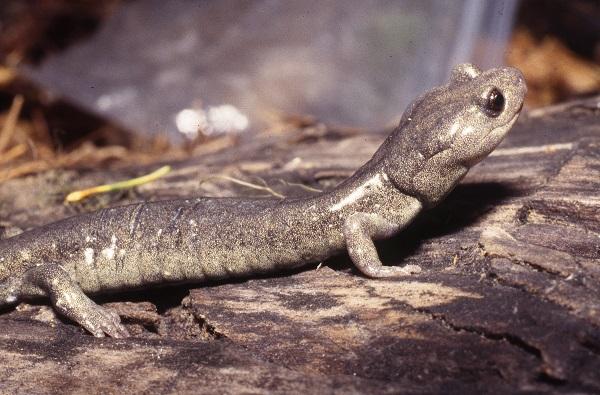You are viewing ARCHIVED content published online before January 20, 2025. Please note that this content is NOT UPDATED, and links may not work. Additionally, any previously issued diversity, equity, inclusion or gender-related guidance on this webpage should be considered rescinded. For current information, visit https://www.blm.gov/blog.
Partnering for amphibian conservation
Story by Brad Jost, Wildlife Biologist. Photos by Brome McCreary, USGS FRESC; Brian Sullivan; Jennifer Peterson, USGS WERC; Marisa Ishimatsu; and David Muth.
The global decline of amphibian and reptile (herpetofauna) populations is an issue that affects the biodiversity, ecosystem function, and integrity of BLM lands and waters. In recognition of the importance of amphibians to families and healthy ecosystems on public and private lands and their value to the economy, Secretary Haaland recently proclaimed May 2-8, 2021 as National Amphibian Week at the Department. Amphibian Week celebrates the importance of amphibians and the partnerships formed to implement amphibian conservation actions to address the ongoing global amphibian crisis.

The BLM manages habitat for more than 100 BLM sensitive herpetofauna species, which also includes Federally listed species. The BLM, as required by the Federal Land Policy and Management Act (FLPMA), manages the public lands to provide for food and habitat for fish and wildlife, including herpetofauna. To achieve this legal requirement, the BLM focuses on herpetofauna conservation at both the field level and in Headquarters. A BLM herpetofauna working group helps to ensure coordination within the agency on this topic.

In the field, BLM specialists focus on several types of herpetofauna work, including:
• Collection of baseline inventory and monitoring data.
• Identification of breeding sites, refugia, and other priority habitats.
• Recovery efforts for Federally listed species.
• Chytrid fungus and other disease pathogen monitoring.
• Proactive conservation through habitat improvement and restoration.
• Introduced and invasive species control and removal.
• Development and implementation of regional habitat management Best Management Practices.
• Serving on local and regional working groups.
• Participation in education and outreach programs.


At the State and Headquarters level, in addition to supporting the field, our work on herpetofauna is largely focused on inter-agency and inter-governmental partnerships that aim to collaboratively understand, raise awareness, and respond to factors causing declines of the Nation’s herpetofauna. One primary partnership group for herpetofauna is the Partners in Amphibian and Reptile Conservation (PARC), which is an over two-decade old coalition of Federal and State agencies, tribes, organizations, and industry groups, that aims to form “proactive partnerships to conserve amphibians, reptiles, and the places they live.”

The PARC administrative structure includes a Federal Agencies Steering Committee (FASC), which coordinates PARC-related work among federal agencies, and which provides recommendations to the PARC Joint Steering Committee. An inter-agency Memorandum of Understanding (MOU) guides the coordination among the PARC FASC members and has led to cooperative efforts that include:
• Identification of species, communities, ecosystems, areas, and other landscape features important to herpetofauna conservation.
• Identification of species and habitats of concern, and risk factors and threats.
• Development of procedures, practices, and programs that promote conservation of herpetofauna and that reduce risks or avert threats.
• Implementation of integrated inventories, monitoring, and data sharing.
• Implementation of joint research.
• Development and sharing of educational and scientific information.
• Development and implementation of management or restoration projects for important areas (or habitats) in need of improvement.
The PARC partnership and FASC MOU highlight the importance of integrating herpetofauna conservation efforts across a diverse array of stakeholders at multiple scales. These conservation efforts emphasize coordination, communication, partnership, science-based decision-making, and strategic on-the-ground action to reduce threats to herpetofauna and their habitats. The implementation of these efforts requires effective and cost-efficient strategies to address the array of conservation challenges facing herpetofauna today.
Related Stories
- Using science to uncover mysteries of the Mesa archaeological site in Alaska
- “Where did my horse come from?” BLM launches a new way for adopters, trainers and others to learn about their wild horses and burros
- Lake Havasu Fisheries Improvement Program is the gift that keeps giving
- BLM is thankful for public lands volunteers
- BLM Fire and National Conservation Lands managers collaborate to meet shared goals
